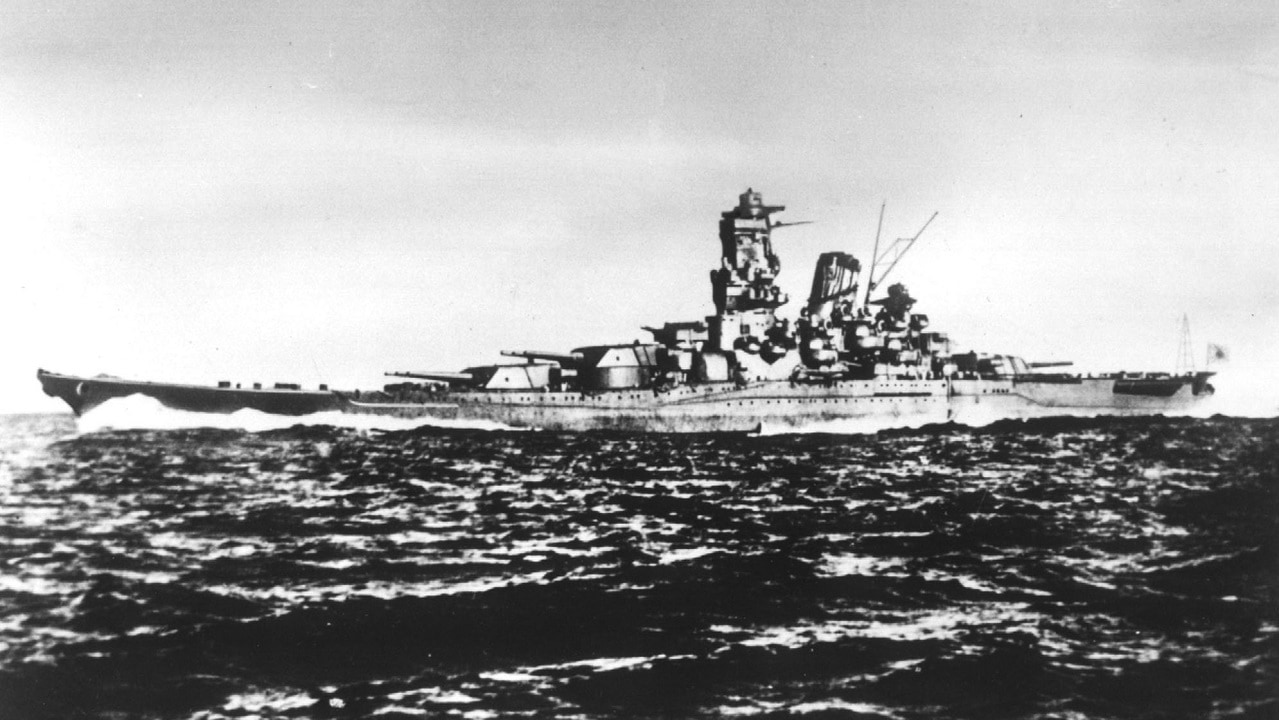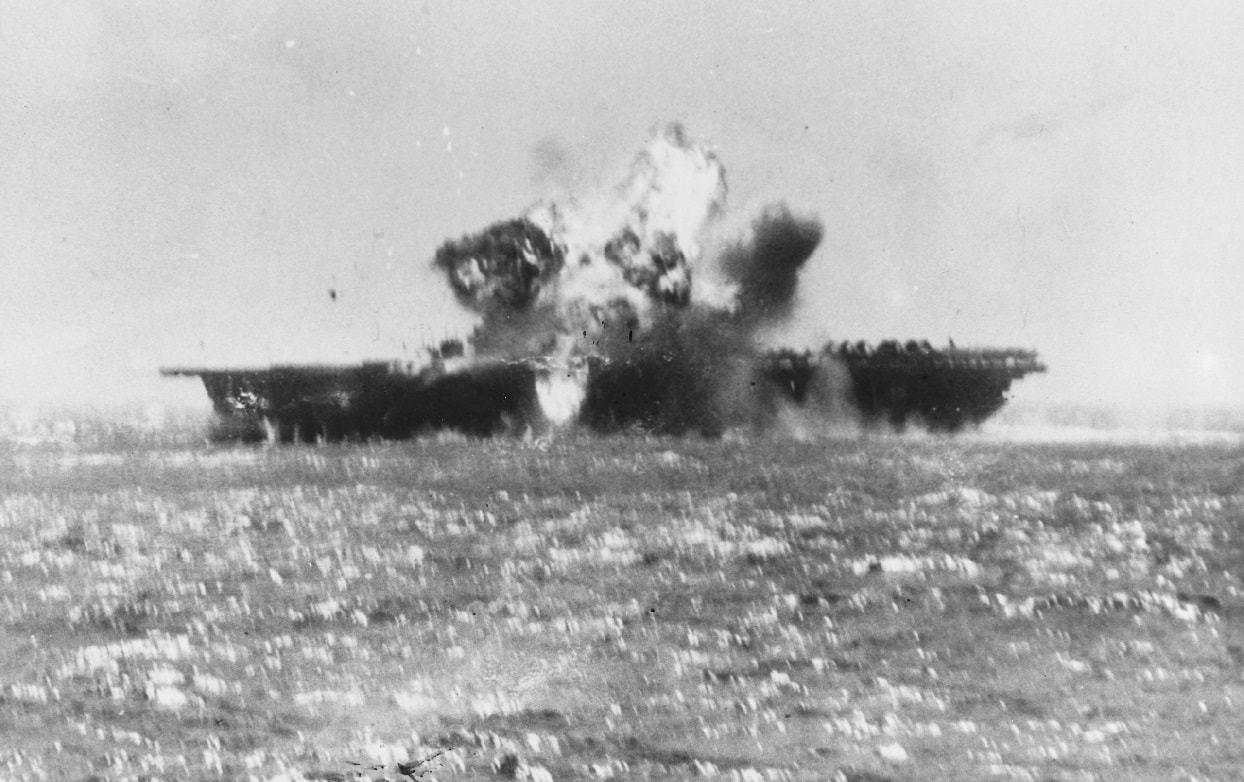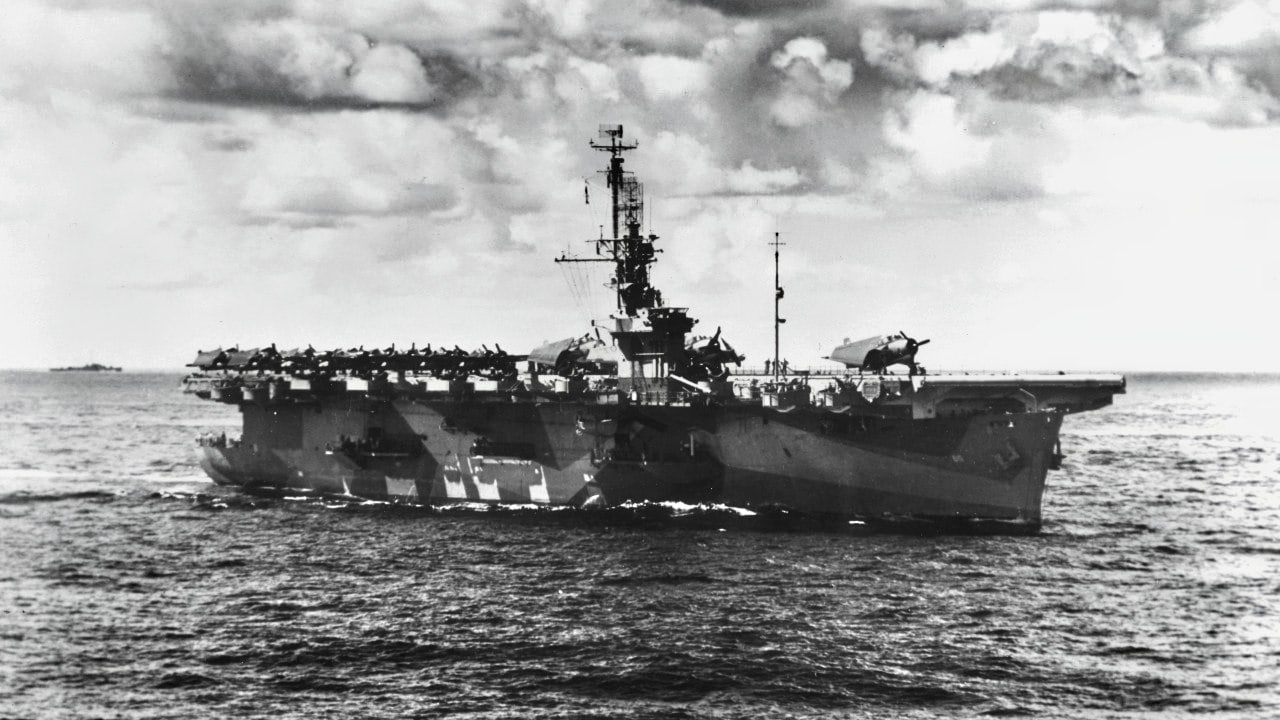Article Summary: The Battle of Leyte Gulf (October 23-26, 1944) was the largest naval battle of World War II and marked the final blow to Japan’s fleet. The U.S. invasion of the Philippines forced Japan into a desperate, multi-pronged attack to disrupt landings.
Key Point #1 – While Admiral Halsey was lured away, leaving the invasion force exposed, the outgunned U.S. Taffy 3 task force mounted a heroic defense at the Battle of Samar. Japanese forces were eventually repelled, and U.S. forces sank four enemy carriers.
Key Point #2 – Japan suffered catastrophic losses, losing its ability to wage large-scale naval warfare, ensuring Allied dominance in the Pacific.
The Battle of Leyte Gulf: How the U.S. Crushed Japan’s Navy
The United States decided to invade the Philippines in 1944, trying to take the archipelago back after Imperial Japan had occupied it in early 1942.
There was heavy debate over whether to bypass the Philippines. The U.S. Navy’s campaign plans did not include it, and naval planners wanted to invade Taiwan instead. However, General Douglas MacArthur insisted the U.S. invade there first. His arguments prevailed, and the Philippine campaign went forward.
During the Battle of Leyte Gulf in late October, the Japanese suffered a crushing defeat. It lost more than 419,000 troops and sailors. U.S. casualties were high, too, and for the first time, the U.S. faced kamikaze attacks.
The Japanese Plan
The Japanese had a grand plan for smashing the invasion force. Like all Japanese plans during the war, it was complicated. The Japanese Imperial Navy’s First Mobile Fleet launched Operation Shō, which pulled together the majority of Japan’s remaining battleship, cruiser, and carrier forces in a desperate, multi-pronged attempt to interdict and destroy Allied landing forces off of Leyte in the central Philippines and inflict crippling damage on U.S. naval forces.
An initial force would decoy the U.S. Third Fleet north, away from the San Bernardino Strait, while three forces converged on Leyte Gulf to attack the landing effort. The First Attack Force, under Vice Adm. Takeo Kurita, was to move from the north across the Sibuyan Sea through the San Bernardino Strait, while the Second Attack Force, under Vice Adm. Shima Kiyohide, and C Force, under Vice Adm. Shōji Nishimura, moved from the south across the Mindanao Sea through the Surigao Strait.
Halsey Takes The Bait
This is where American industrial might shine through. Halsey had nine fleet carriers and six light carriers. In less than three years, the Pacific Fleet had grown to incredible strength.
However, when the main body of the First Mobile Fleet approached the Philippines from the northeast, it successfully drew Admiral William F. Halsey’s Third Fleet (including Task Force 34 with its powerful, fast battleships) away from the Leyte Gulf area, exposing the northern flank of Vice Admiral Thomas C. Kinkaid’s Seventh Fleet invasion force.
Halsey had acted too aggressively, and after getting a message from Admiral Chester Nimitz asking where the support for the beaches was, he angrily withheld that support for a few more hours.
After taking a beating on the first day of battle, Oct. 25, 1944, the Imperial Japanese Navy’s First Mobile Striking Force, under the command of Takeo Kurita, appeared to be retreating westward. Halsey took off for the Northern Force.
Taffy 3 Left Alone
This left a small task force, Call Sign Taffy 3, alone to protect the invasion beaches. Taffy 3 consisted of six escort carriers, three destroyers, and four destroyer escorts. It was intended to provide shore support and anti-submarine patrols, but it did not have guns capable of penetrating the armor of Japanese battleships and heavy cruisers.
During the night, Kurita’s task force turned around in the San Bernardino Strait and headed straight for Taffy 3. Kurita’s force consisted of four battleships, six heavy cruisers, two light cruisers, 11 destroyers, and 36 aircraft performing kamikaze attacks. Kurita’s flagship was the Yamato, the largest battleship ever built. It was joined by the Musashi with its 18-inch guns. On Oct. 24, the Musashi was savaged by U.S. airpower—she was hit by 19 torpedoes and 17 bombs in an awesome display of firepower.
Southern Force Routed
The Southern Force conducted their diversionary attack without air cover. This force would be routed by the U.S. Seventh Fleet’s Bombardment and Fire-Support Group, comprising battleships, cruisers, destroyers, and PT boats, in a thundering surface engagement on Oct. 24-25 in the Battle of Surigao Strait as it attempted to force its way into Leyte Gulf from the south. The Southern Force, with two battlewagons, a heavy cruiser, and four destroyers, was left with just one destroyer.
Taffy 3 And The Center Force
Center Force approached the invasion beaches, and for the second time, naval gunfire centered on an aircraft carrier. This was the Battle of Samar, the most dramatic battle in the Leyte campaign.
That morning at 6:37, Avenger pilot William Brooks reported a shocking turn: A powerful Japanese fleet—four battleships, eight cruisers, and 10 destroyers—was only 20 miles west, steaming directly toward the lightly defended carriers of Taffy 3.

Battleship IJS Yamato from World War II.
Twenty-two minutes later, the gigantic 18.1-inch guns of the Yamato opened fire from over 19 miles away. The 3,300-pound shells straddled the escort carrier White Plains, a near-miss buckling her hull and tripping her circuit breakers. Shells from the other battleships, loaded with green, pink, and red dye to assist in ranging, rained down among the unarmored flat-tops.
Last Stand Of the Tin Can Sailors
The thinly armored U.S. escort carriers retreated into a rain squall and launched their aircraft. Three destroyers, led by the USS Johnston and the destroyer escort USS Samuel B. Roberts, raced into the teeth of the Japanese fleet, firing everything they had and launching torpedoes. This fantastic feat of bravery is remembered as “the last stand of the tin can sailors.”
Confusion reigned supreme. The Japanese mistook the destroyers as cruisers and the destroyer escorts as destroyers. One armor-piercing shell ripped right through the Roberts and out the other side without exploding because the ship was so thin-skinned.
The Johnston raked the cruiser Kumano’s superstructure with gunfire and hit her with four torpedoes, one of which blew the bow off. But she was blasted by the 18-inch guns of the Yamato. The Yamato reported sinking a cruiser, but the Johnston, although mangled, was not sunk. It made two more dashes, lighting up the battleship Haruma with 15 hits and then attacking a cruiser.
The escort carrier Gambier Bay and the destroyer Hoel were sinking after taking multiple hits. The two fleets were a jumbled mess, with smoke and rain squalls masking visibility. Three American ships—the Johnston, the Heerman, and the Roberts—nearly collided.

A kamikaze aircraft explodes after crashing into Essex’s flight deck amidships 25 November 1944.
The Johnston was wrecked after several daring attacks against the superior Japanese ships. Capt. Ernest Evans, commander of the Johnston, ordered the crew to abandon the ship. He left with them but was never seen again. Evans was posthumously awarded the Medal of Honor. So impressed were the Japanese by the bravery of the Johnston’s crew that survivors in the water saw the captain of a Japanese destroyer salute as they passed by.
Finally, Taffy 3’s aircraft arrived on the scene. Kurita thought he was under attack by larger Essex-class carriers due to the ferocity of the American air strikes. The destroyers had severely crippled or sunk four cruisers. Kurita had lost tactical control. Believing he had sunk two Essex carriers and several support ships, he broke off for the San Bernardino Strait.
The Japanese plan had worked, and they had achieved surprise. But the bravery of American sailors on the small ships of Taffy 3, fighting ferociously, had turned the tide.
Later that day, Halsey’s force finally caught and sunk the four Japanese aircraft carriers they were pursuing.

USS Wake Island Casablanca-Class Aircraft Carrier
Japan’s fleet was crushed, and they would never again be able to go on an offensive. Their carriers, already bereft of experienced pilots who had never been replaced, were swept off the seas. U.S. losses were high; 16,043 soldiers and 7,270 sailors were killed. Japanese losses were massive; 419,912 sailors, soldiers, and pilots were killed during the battle.
About the Author: Steve Balestrieri
Steve Balestrieri is a 19FortyFive National Security Columnist. He served as a US Army Special Forces NCO and Warrant Officer. In addition to writing for 19FortyFive, he covers the NFL for PatsFans.com and is a member of the Pro Football Writers of America (PFWA). His work was regularly featured in many military publications.

